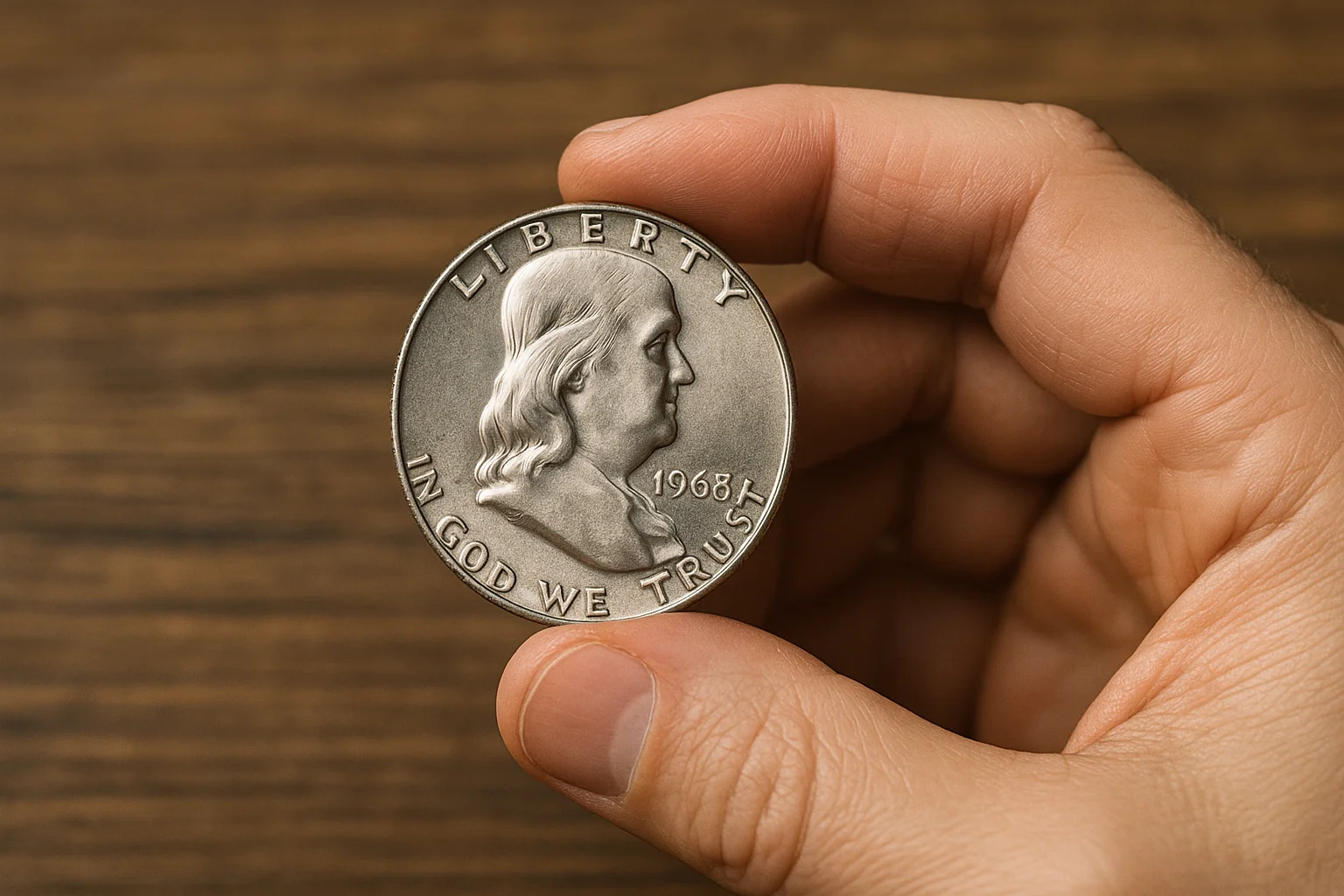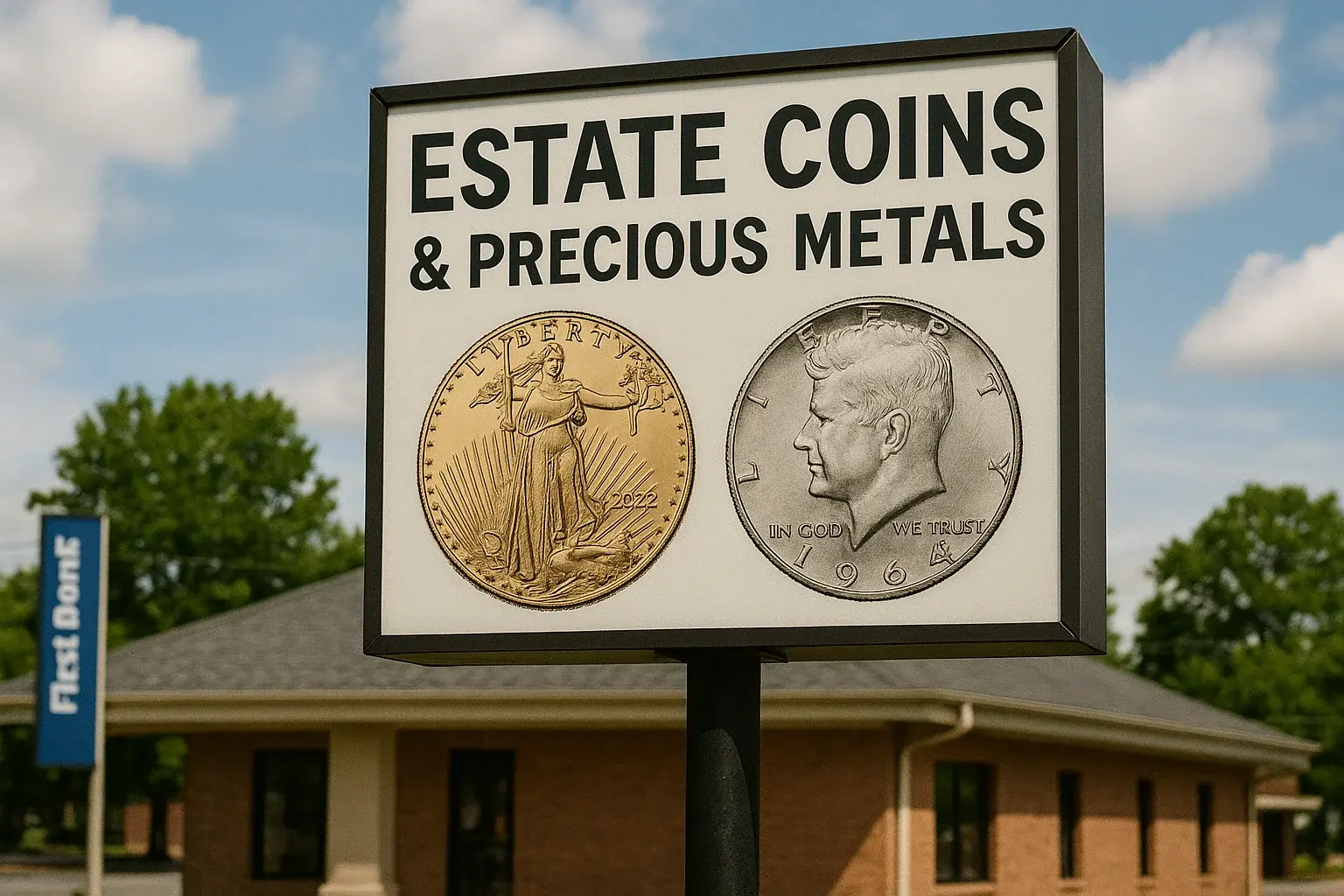1963 Franklin Half Dollar: The Silver Titan’s Last Bow
What if we told you a coin minted more than 60 years ago holds more than silver—it holds the echoes of American legacy, Cold War tension, and one of the most abrupt changes in coin design history?
The 1963 Franklin Half Dollar isn’t just the last in its series—it’s a numismatic swan song, minted just before the nation would mourn a president and immortalize him in silver.
But what is the 1963 half dollar value?
Quick Overview
| Feature | Details |
| Name | Franklin Half Dollar |
| Year | 1963 (Final year of series) |
| Mint Marks | None (Philadelphia), D (Denver) |
| Composition | 90% Silver, 10% Copper |
| Weight | 12.5 grams |
| Diameter | 30.6 mm |
| Edge | Reeded |
| Designer | John R. Sinnock |
| Mintage (1963-P) | 22,164,000 |
| Mintage (1963-D) | 67,069,292 |
Historical Snapshot: Why 1963 Mattered
The world was on edge: the Cold War simmered, the Civil Rights Movement swelled, and America stood poised for tragedy. The Franklin Half Dollar, with its classic, calm aesthetic, was about to be replaced forever.
Then, the Unthinkable:
On November 22, 1963, President John F. Kennedy was assassinated. In an unprecedented move, the U.S. Mint halted future Franklin Half production and rushed to design and release the Kennedy Half Dollar in his honor. Thus, 1963 became the last year the Franklin design was ever produced.
“Ben was replaced by Jack. Not because of law—but because of loss.”

The Art of the Coin: Symbolism in Metal
The Franklin Half Dollar stands out for what it doesn’t include—a president. Instead, it pays tribute to an inventor, philosopher, and diplomat.
| Side | Imagery | Symbolism |
| Obverse | Ben Franklin bust | Wisdom, science, civic virtue |
| Reverse | Liberty Bell + Eagle | Independence and military strength |
Value Guide: What’s It Worth Today?
Even if you’re holding one in your pocket, condition makes all the difference. Here’s a snapshot of value by condition and rarity:
| Grade / Type | 1963-P Value | 1963-D Value | Notes |
| Circulated (XF – AU) | $13 – $14 | $13 – $14 | Based on silver melt value |
| Uncirculated (MS60 – MS64) | $20 – $40 | $20 – $45 | Mild premiums for clean luster |
| High Grade (MS65 – MS66) | $55 – $125 | $60 – $140 | More common for Denver mint |
| Gem Quality (MS67+ FBL) | $850 – $85,000+ | $500 – $15,000 | FBL = Full Bell Lines, extremely rare |
| Proof (Philadelphia only) | $35 – $90 | N/A | Brilliant mirror surfaces, made for collectors only |
The record auction price for a 1963 Franklin Half Dollar was $85,188 in MS67+ Full Bell Lines (PCGS).
The Silver Factor: How Melt Value Impacts Pricing
One reason the 1963 Franklin Half Dollar never truly “loses value” is its composition: 90% silver. That gives it intrinsic worth based on metal prices, which fluctuate daily.
| Silver Spot Price | Melt Value |
| $20/oz | ~$9 |
| $25/oz | ~$11.25 |
| $30/oz | ~$13.50 |
Even in poor condition, these coins rarely sell below melt value. During silver booms (like 2011), many were melted down, reducing surviving numbers—especially in high grades.
Rare Varieties & Errors
Not all 1963 halves are born equal. Some were struck with quirks, defects, or artistic oddities that now fetch collector premiums.
| Error Type | Description | Value Estimate | Collector Demand |
| Full Bell Lines | Liberty Bell shows full horizontal lines—rare and crisp | Up to $85,000 | Extremely High |
| “Bugs Bunny” Clash | Die clash gives Franklin’s mouth buck teeth | $50 – $200+ | High |
| Struck on Wrong Planchet | Coin minted on foreign or dime planchet | $2,000 – $4,500+ | Rare |
Collectors especially hunt Full Bell Lines examples with near-perfect strike—most common coins do not qualify.
Full Bell Lines Explained: What to Look For
The Full Bell Lines (FBL) designation is the holy grail for Franklin collectors. It refers to two uninterrupted horizontal lines at the bottom of the Liberty Bell on the reverse.
| Feature | Standard Coin | FBL Coin |
| Lower bell lines | Often weak or incomplete | Crisp, uninterrupted lines |
| Collector value boost | None | 5x–100x price premium |
| Typical grades found | MS60–MS64 | MS65–MS67+ |
Tip: FBL status is only given by professional grading services. A coin must show complete, unbroken lines with no marks disrupting them.
Proof vs. Business Strike: Know the Difference
Proof Franklin Half Dollars were made for collectors, not circulation. They have mirror-like fields and frosted devices (design elements). Business strikes, on the other hand, were made for general use.
| Feature | Business Strike | Proof Strike |
| Mint Location | Philadelphia or Denver | Philadelphia only (1963) |
| Appearance | Satin or frosty | Shiny, mirror-like |
| Mintage | 89 million+ (P+D) | 3,075,645 (1963 Proofs) |
| Collector Demand | High for FBL grades | High for cameo or deep cameo |
Collectors love proof coins with Deep Cameo (DCAM) contrast—these can fetch $100+ in top grades.
Tips for Collectors: How to Spot Value
Checklist Before You Sell or Slab:
✅ Check for Full Bell Lines (flip to the reverse!)
✅ Look for doubling, clashes, or off-metal strikes
✅ Use gloves—no fingerprints, please
✅ Weigh it—genuine coins should weigh 12.5 grams
✅ For valuable coins, get professional grading (PCGS or NGC)

Market Watch: Why the 1963 Franklin Still Shines
Even though the Franklin series was short-lived (1948–1963), demand is high. Why?
- 90% silver – always has melt value
- Final year – always more collectible
- Sharp design – admired by artists and historians
- Known error coins – fuels hunt appeal
- Kennedy crossover – makes it historically transitional
Franklin’s Coin Legacy: Ahead of Its Time?
The Franklin Half Dollar was controversial when proposed:
- No military theme
- No presidential portrait
- A pacifist on a war-era coin?
Still, the Treasury approved it. Some consider the design ahead of its time, celebrating science, diplomacy, and civil service rather than war or conquest.
💬 “Tell me and I forget. Teach me and I remember. Involve me and I learn.” —Benjamin Franklin
His coin invites Americans to think, not just spend.
Fake Franklins: How to Spot a Counterfeit
Yes, counterfeit Franklin halves exist, especially FBL-designated ones or struck-on-wrong-planchet errors.
| Test | What to Look For |
| Weight | Should be exactly 12.5g |
| Magnetism | Franklin halves are non-magnetic |
| Edge Reeding | Should be uniform and tight |
| Bell Lines | Fake FBLs often have tooling marks |
| Certification | Trust only PCGS/NGC for high-value coins |
Always be wary of raw coins sold online without third-party grading when FBL or error claims are made.
